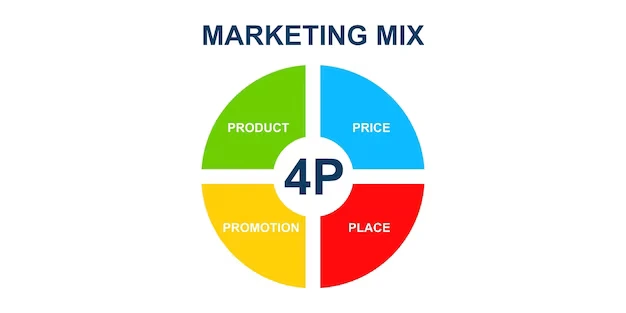Marketing is the backbone of any successful business, serving as the bridge between companies and their customers. It encompasses a variety of strategies designed to promote products or services and build lasting relationships. Whether it’s through traditional methods like print ads and billboards, or more modern techniques like social media and digital content, marketing plays a crucial role in driving sales and brand awareness.

Understanding the fundamentals of marketing and how to apply them effectively can be the key to unlocking business growth and customer loyalty. In this guide, we’ll explore the core elements of marketing, along with the diverse strategies businesses use to thrive in today’s competitive marketplace.
What Is Marketing?
Marketing involves the activities a company takes to promote the buying or selling of its products or services. It includes advertising and helps businesses connect with consumers, other businesses, and organizations to sell their products and services.
Understanding Marketing
Marketing covers all the actions a company takes to attract and keep customers. It involves building relationships, which can include sending thank you emails, playing golf with prospective clients, returning calls promptly, or meeting for coffee. Essentially, it’s about making meaningful connections with current and potential customers.
Get TikTok SEO Cheat here
The 4 P’s of Marketing
The Four Ps—Product, Price, Place, and Promotion—are the foundation of a successful marketing strategy. These elements were made popular by Neil Borden in the 1950s as part of the marketing mix concept.
1. Product
This refers to the item or service a company offers. A product should meet an unmet need in the market or fulfill demand for something already available. Marketers need to understand how the product stands out, whether it can be paired with other items, and what competition it faces.
2. Price
Price is how much the company charges for the product. It includes considerations like production costs, marketing expenses, distribution, and competitor pricing. The price must offer good value for consumers while being profitable for the company.
3. Place
Place refers to how the product is distributed—whether through a physical store, online, or both. It considers how and where the product is placed to ensure maximum visibility, whether it’s in a storefront or on a website.
4. Promotion
Promotion is the communication strategy used to market a product. This includes advertising, sales promotions, direct marketing, and public relations. The type of promotion depends on where the product is in its lifecycle and the image the company wants to project.

Types of Marketing Strategies
Marketing includes a wide range of strategies. As the industry evolves, some strategies may be more effective for certain companies than others.
Traditional Marketing Strategies
Before the internet, traditional marketing was the main way businesses reached customers. Here are a few types:
- Outdoor Marketing: Involves ads in public spaces, like billboards, vehicle wraps, or public transit ads.
- Print Marketing: Uses printed materials like flyers and brochures, which are easy to distribute.
- Direct Marketing: Directly targets potential customers with materials like coupons, mailers, or pamphlets.
- Electronic Marketing: Uses TV and radio to reach audiences through short, impactful ads.
- Event Marketing: Involves gathering potential customers at events like trade shows, seminars, or private demonstrations.
Digital Marketing
The rise of digital marketing has transformed how businesses reach customers. Here are some popular digital strategies:
- Search Engine Marketing: Companies use paid placements or SEO techniques to increase their visibility in search engine results.
- E-mail Marketing: Businesses send emails to potential customers with updates, offers, or promotions.
- Social Media Marketing: Involves building a presence on platforms like Instagram or Facebook, using both paid ads and organic content to engage with followers.
- Affiliate Marketing: A third party promotes your product, earning a commission on any resulting sales.
- Content Marketing: Creates valuable content (e.g., eBooks, videos) to educate and engage customers while promoting your business.
The Benefits of Marketing
A well-executed marketing strategy can deliver a range of benefits to a business:
- Audience Generation: Marketing allows a company to target the right audience, connecting with people who will benefit most from its product or service.
- Inward Education: It provides valuable insights through market research, helping companies understand their audience and optimize their strategies.
- Outward Education: Marketing communicates what the company offers and how its products improve lives, building a connection with potential customers.
- Brand Creation: Marketing shapes a company’s image and reputation, helping businesses control how they are perceived before customers even interact with them.
- Long-lasting Impact: Effective campaigns leave a lasting impression on customers. Iconic campaigns or mascots, like Pillsbury’s Poppin’ Fresh, create memorable brand associations.
- Financial Performance: Strong marketing builds relationships with customers, boosts sales, and gives companies a competitive edge over rivals, even when products are similar.
Marketing is key to building relationships, increasing visibility, and driving growth. With the right strategies in place, a business can achieve long-term success in a competitive market.
What Are the Limitations of Marketing?
While marketing is essential for business success, it does have its limitations. Companies must navigate several challenges when launching campaigns, and these can affect both their strategies and outcomes.
1. Oversaturation:
With countless companies vying for consumers’ attention, the marketplace can become highly competitive. This oversaturation often leads to advertising fatigue, where potential customers are bombarded with marketing messages. As a result, any individual campaign might struggle to stand out, reducing its effectiveness.
2. Devaluation:
When companies frequently offer sales or discounts, they risk devaluing their products in the eyes of consumers. Over time, customers may come to expect lower prices and delay purchases in anticipation of future discounts. For example, many shoppers intentionally hold off on purchases until big sales events like “Black Friday” come around, reducing full-price sales opportunities.
3. No Guaranteed Success:
Marketing requires upfront investment, but it doesn’t always lead to a return. Campaigns can fail despite thorough research and planning, and studies meant to inform strategy may not always yield actionable insights. Companies can spend significant resources on marketing efforts without any assurance of success.
4. Customer Bias:
While loyal customers already favor a brand, marketing campaigns are often designed to attract new customers. However, this focus on winning over non-loyal patrons may overlook opportunities to further strengthen relationships with existing customers through product improvements or rewards programs.
5. Cost:
Marketing can be expensive, especially for large-scale campaigns. Digital marketing requires ongoing maintenance, scheduling, and management, which can quickly add up in cost. High-profile advertising, such as commercials during the “Super Bowl,” may require millions in upfront expenses.
6. Economy-Dependent:
Marketing thrives when consumers have disposable income, but during economic downturns, even the best campaigns may fail to drive sales. In times of recession or high unemployment, consumers are likely to cut back on spending, making it harder for companies to achieve marketing success despite strong efforts.
Understanding these limitations can help businesses make more informed decisions about how and when to invest in marketing strategies.
In Conclusion
Marketing plays a vital role in any business by making products and services visible to consumers and motivating them to choose those offerings over competitors. Though it requires a significant investment, companies set aside marketing budgets with the expectation that the resulting sales and profits will surpass the costs. When executed well, marketing becomes a driving force for growth and helps a brand establish its presence in the market.
Read also:
- Huawei Unveils the Bisheng Laser Printer X1 Series with Impressive Features
- Crypto Exchanges Exempt from Taxes as Kenya Court Overturns 2023 Finance Bill
- 9 Reliable Places to Sell Your Used Phones in Nigeria
- Ad Placement Problems: Ensuring Optimal Ad Performance and Brand Safety
- Best 10 Expense Tracker Apps for Managing Your Finances in 2024
- 11 Best Netflix Alternatives To Stream For Free